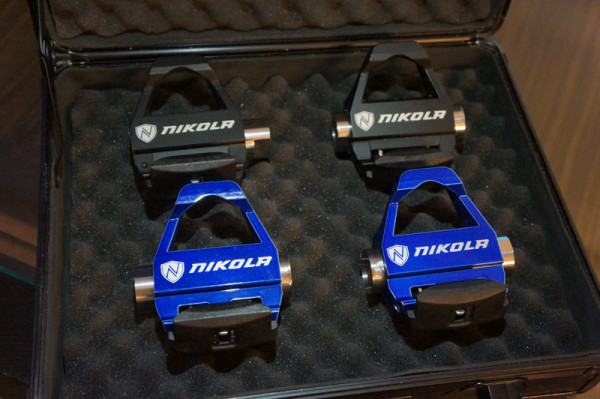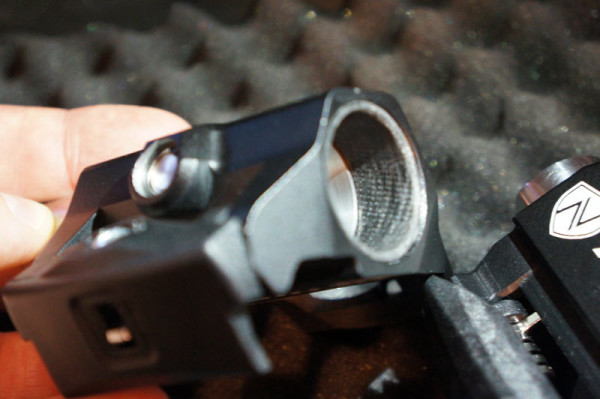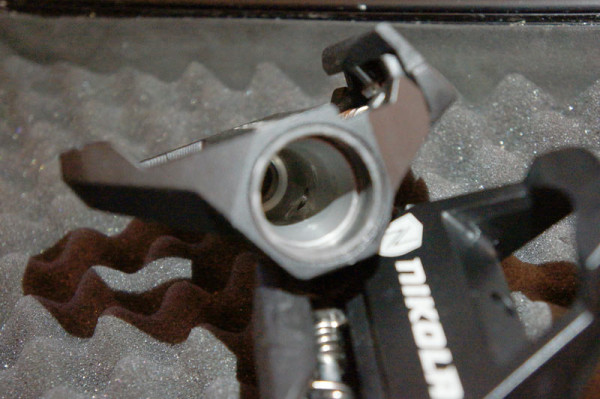Among the more interesting inventions to come out at Interbike was Nikola’s Zivo road bike pedals, which actively change the Q-factor throughout the pedal stroke’s rotation. Here’s the official introduction:
Coming to marketing in Fall 2014, Nikola is the first road pedal that produces power, efficiency, and comfort. Nikola Innovation, located in Cleveland, Ohio, has been in research developing the optimal performance pedal. Studying the motion of speed skaters and cyclists has been the foundation of this new technology called “Zivo” which has Serbian origination meaning “alive”. Nikola completed studies at the Human Performance Lab of Cleveland State University refining the Zivo technology producing peak power improvement of 7% in a 30 second Wingate tests and efficiency improvement of 2.1%. This new motion creates comfort with riders’ knees and hips with its patented Synchronized Q-factor generated by Zivo. Two versions will be offered, one in Titanium at $549, the second in Stainless for $339. Both pedals are using a standard 3-hole standard style cleat and compatible with any 9/16” crank-arm threading.
Wanna see how it works?
Inside the pedal body is a keyed cylinder that rotates on the spindle, and unfortunately he didn’t have the spindle with him when we caught him toting the gun case holding these samples.
The pedal body rotates on that cylinder, sliding in near the top of the pedal stroke and out near the bottom. Total lateral movement is 25mm. Founder Nick Stevovich says they’ve tested narrower and wider, but this was the best mix of cornering clearance and effectiveness.
There are several claimed benefits. First, it uses more of the adductor and glutes, which means more muscle activation for more power. Second, it gives you a more natural motion, which can ease knee pain or hip impingement issues. Clinical trials being conducted at Allegheny Hospital and University of Pittsburgh will allow them to make medical claims in the future, but they’re just getting started. He’s been working on the idea for about 16 years, but only really been developing it for the past five.
The inner cylinder slides on a bushing to reduce friction and allow it to both rotate and slide freely.
On the outer surface of the cylinder is a groove that’s timed to a wave pattern. The actual wave pattern took a lot of time to develop and went through a lot of iterations.
A pin rotates on a sealed bearing and slots into the wave groove. That keeps the pedal body from sliding all the way off the cylinder. As usual, video comes to the assist:
Since everyone’s different, you’ll be able to clock them to suit your own needs, generally having them sit at the widest point near the bottom. They’re working on an accelerometer based set up system to calibrate it perfectly for maximum power output, but for now it’s by feel.
They have Look Keo compatible bodies and are working on SPD versions and flat pedals for commuters. They’re alloy bodies now, but they’re looking at magnesium and other materials.
Stainless are claimed at just under 300g. The Titanium model comes in at an estimated 225g with a 250lb rider weight limit with steel bolt and 180lb with titanium bolt.




